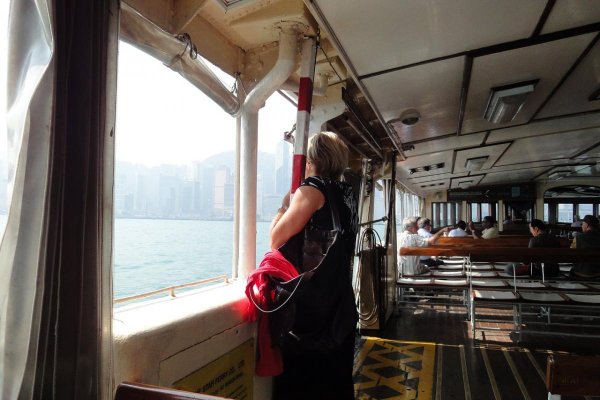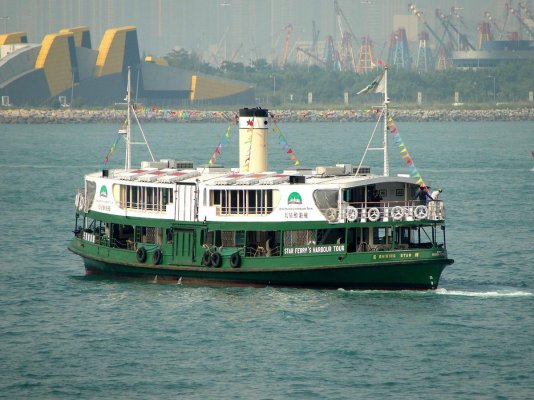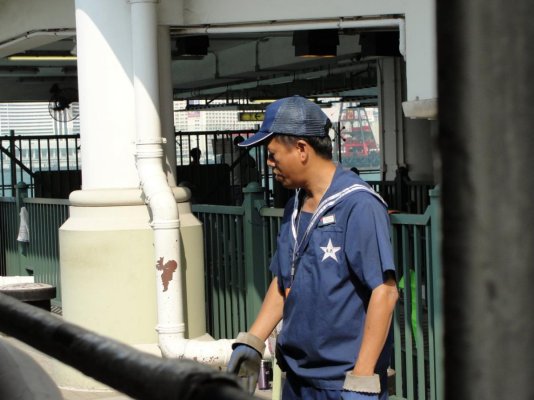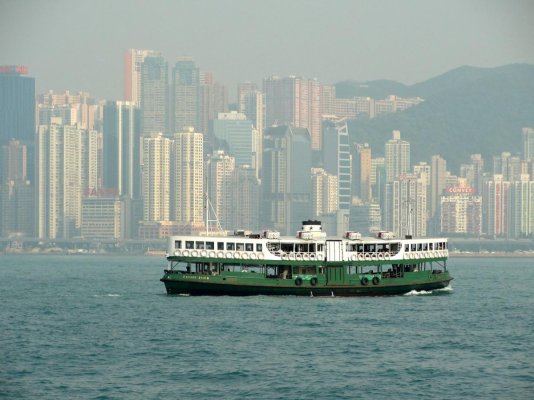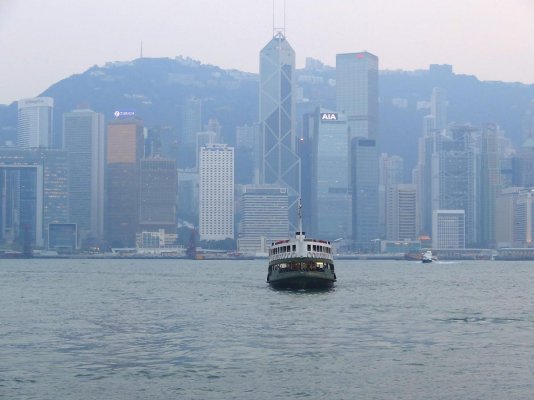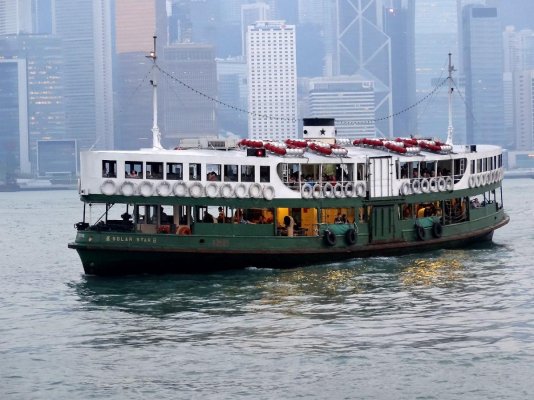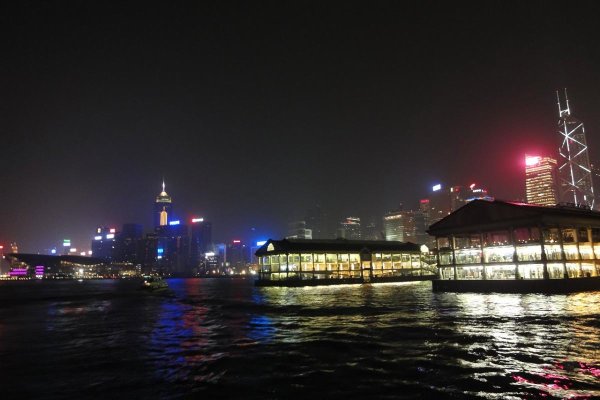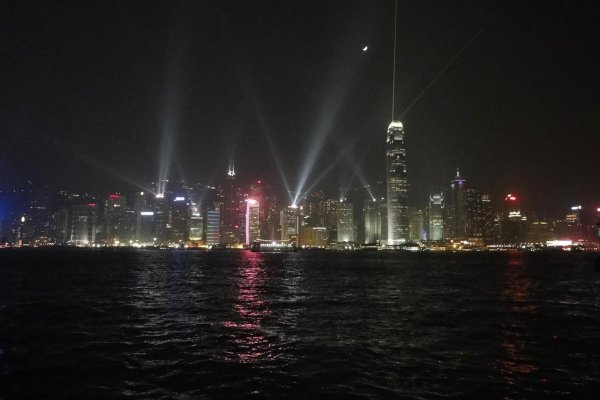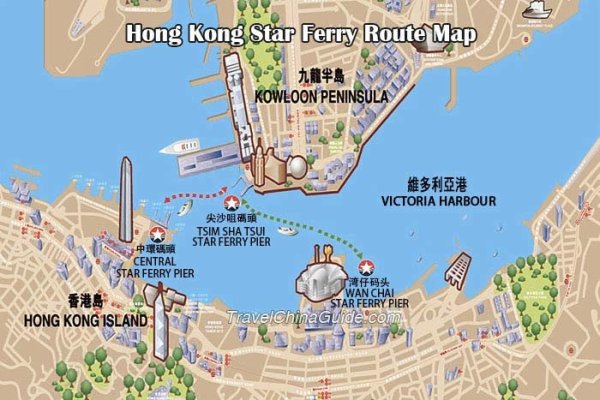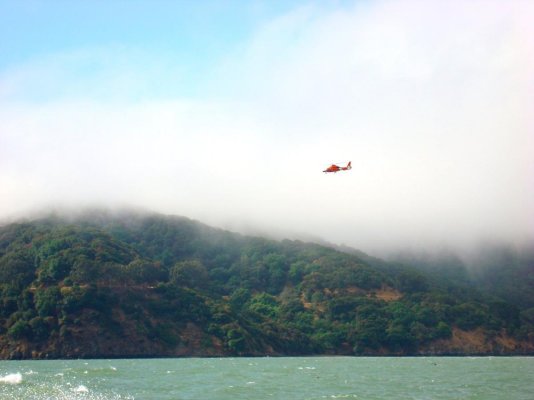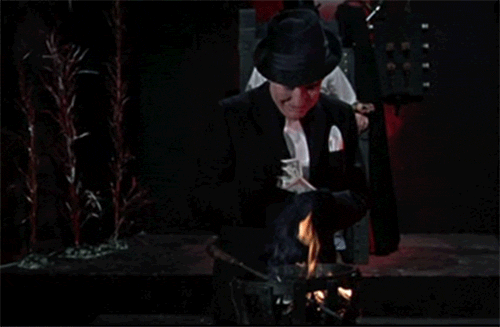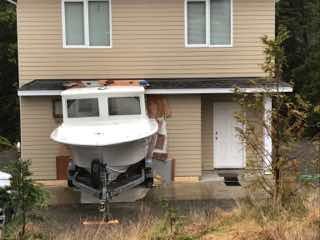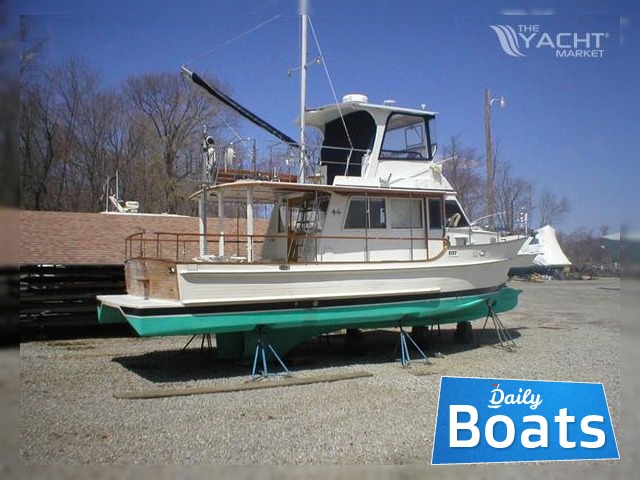Still about iconic old ferries in public transportation, the Star Ferry in Hong Kong.
Star Ferry and the Peak Tram are the most characteristic and will-know tools of transportation in Hong Kong. Star Ferry, which has been operated for more than one century, is not only an important part of the cross-sea transportation system, but also the most popular and economic way to cruise the bay of Hong Kong.
Hong Kong :
Hong Kong consists of the island of Hong Kong (Hong Kong Island), Stonecutters' Island (now joined to the mainland), Kowloon Peninsula, and the New Territories on the adjoining mainland.
The island of Hong Kong was ceded to Britain in 1841/42. Stonecutters' Island and Kowloon were annexed in 1860, and the New Territories, which are mainly agricultural lands, were leased from China in 1898 for 99 years.
On July 1, 1997, Hong Kong was returned to China. The vibrant capitalist enclave retains its status as a free port, with its laws to remain unchanged for 50 years. Its first chief executive, Tung Chee-hwa, formulated a policy agenda based on the concept of “one country, two systems,” thus preserving Hong Kong's economic independence. Hong Kong's economy is characterized by free trade, low taxation and minimum government intervention. It is the world's 9th largest trading economy, with the mainland of China as its most significant trading partner.
In total, there are about 234 outlying islands in the country, with the island of Hong Kong (Hong Kong Island) being the most famous and populated. Between Hong Kong Island and the Kowloon Peninsula lies Victoria Harbour, one of the world's most renowned deep-water harbours.
After the British gained the Kowloon Peninsula as part of the Hong Kong colony in 1860 for facilitating trade, the peninsula was rapidly developed. A number of industries such as shipbuilding, soy, and tanneries set up in different parts of the Kowloon Peninsula.
At the same time, many people have migrated and settled in the Kowloon Peninsula. Both the European Community and Chinese Community built up the Tsim Sha Tsui and Yaumati areas respectively. As the residents in Kowloon still needed to connect with the Colony center in the Victoria City on Hong Kong Island, it was necessary to have water transportation. In fact, there were already casual sampans and junks providing the communication between Hong Kong Island and owloon Peninsula in the 1860s.
The Ferry Service started with a Steam Launch :
The history of Star Ferry can be dated back to Qing Dynasty. Around 1880s, a Parsee merchant named Dorabjee Naorojee started a ferry service on Victoria Harbour. Dorabjee bought a boat from Grant Smith, a gentleman who returned to the colony from a trip to London with a new steam engine and installed it in a wooden boat to run a cross harbour ferry business in 1870 with an irregular service.
At the beginning, this ferry service was not a major business focus of Dorabjee who owned a bakery, mainly used the ferry to transport the bread from Hong Kong Island to the Kowloon Hotel on the Kowloon Peninsula.
He later bought two steam vessels called Morning Star and Evening Star, it was Dorabjee who started the tradition of naming the ships after stars in our galaxy. The service became popular and the fleet grew from two to four steam vessels in a decade. Dorabjee started Kowloon Ferry Company in 1888, the capacity of each vessel was 100 people and, on average, 147 trips were made every day. He incorporated his business into a formal company called the Star Ferry Company in 1898 before his retirement. Indeed in 1898, he retired and went to India after selling the ferry company to the Hong Kong and Kowloon Wharf and Godown Company Ltd. At this time the Star Ferry was the principal public transport between Hong Kong Island and Kowloon peninsula.
The fleet survived a devastating typhoon in 1906, and again in 1908.
After World War I, passenger service increased dramatically and larger Double-decker ferries were added in 1920. A second-class fare then included a seat, and ships were licensed to carry 555 persons.
Then later the company converted all the engines of the ferries from steam engine to diesel engines. The reasons to convert the engine were that there was a shortage of coal in the world which made the price of coal become very high. Moreover, as the diesel engine was much smaller than the steam engine; together with the cancellation of the storeroom for the coal, it helped to reduce the size of the engine room in the ferry which created more space for carrying more passengers. Furthermore, the using of diesel engine could reduce the running cost of the ferry as the cost of using diesel was only one third of using coal. The first diesel boats were launched in 1933.
At the beginning of World War II, Star Ferry offered service to refugees and troops in Kowloon Peninsula under the attack of Japan. By the time the Japanese bombed Pearl Harbor in December, 1941, the ferry company had attempted to disperse the fleet to avoid capture. The Electric Star and Northern Star were sunk at the Hong Kong Ice House ferry pier. The Japanese salvaged the ships and commandeered the rest of the fleet, using some of them on the rough run up the South China Sea. The Golden Star was chased by the Americans, who bombed it from the air, sinking the ship. Then most of the other ferries were grounded for 44 months.
The end of the war found the Star Ferry fleet in poor shape, and a rebuilding program was begun.
Star Ferry and the Peak Tram are the most characteristic and will-know tools of transportation in Hong Kong. Star Ferry, which has been operated for more than one century, is not only an important part of the cross-sea transportation system, but also the most popular and economic way to cruise the bay of Hong Kong.
Hong Kong :
Hong Kong consists of the island of Hong Kong (Hong Kong Island), Stonecutters' Island (now joined to the mainland), Kowloon Peninsula, and the New Territories on the adjoining mainland.
The island of Hong Kong was ceded to Britain in 1841/42. Stonecutters' Island and Kowloon were annexed in 1860, and the New Territories, which are mainly agricultural lands, were leased from China in 1898 for 99 years.
On July 1, 1997, Hong Kong was returned to China. The vibrant capitalist enclave retains its status as a free port, with its laws to remain unchanged for 50 years. Its first chief executive, Tung Chee-hwa, formulated a policy agenda based on the concept of “one country, two systems,” thus preserving Hong Kong's economic independence. Hong Kong's economy is characterized by free trade, low taxation and minimum government intervention. It is the world's 9th largest trading economy, with the mainland of China as its most significant trading partner.
In total, there are about 234 outlying islands in the country, with the island of Hong Kong (Hong Kong Island) being the most famous and populated. Between Hong Kong Island and the Kowloon Peninsula lies Victoria Harbour, one of the world's most renowned deep-water harbours.
After the British gained the Kowloon Peninsula as part of the Hong Kong colony in 1860 for facilitating trade, the peninsula was rapidly developed. A number of industries such as shipbuilding, soy, and tanneries set up in different parts of the Kowloon Peninsula.
At the same time, many people have migrated and settled in the Kowloon Peninsula. Both the European Community and Chinese Community built up the Tsim Sha Tsui and Yaumati areas respectively. As the residents in Kowloon still needed to connect with the Colony center in the Victoria City on Hong Kong Island, it was necessary to have water transportation. In fact, there were already casual sampans and junks providing the communication between Hong Kong Island and owloon Peninsula in the 1860s.
The Ferry Service started with a Steam Launch :
The history of Star Ferry can be dated back to Qing Dynasty. Around 1880s, a Parsee merchant named Dorabjee Naorojee started a ferry service on Victoria Harbour. Dorabjee bought a boat from Grant Smith, a gentleman who returned to the colony from a trip to London with a new steam engine and installed it in a wooden boat to run a cross harbour ferry business in 1870 with an irregular service.
At the beginning, this ferry service was not a major business focus of Dorabjee who owned a bakery, mainly used the ferry to transport the bread from Hong Kong Island to the Kowloon Hotel on the Kowloon Peninsula.
He later bought two steam vessels called Morning Star and Evening Star, it was Dorabjee who started the tradition of naming the ships after stars in our galaxy. The service became popular and the fleet grew from two to four steam vessels in a decade. Dorabjee started Kowloon Ferry Company in 1888, the capacity of each vessel was 100 people and, on average, 147 trips were made every day. He incorporated his business into a formal company called the Star Ferry Company in 1898 before his retirement. Indeed in 1898, he retired and went to India after selling the ferry company to the Hong Kong and Kowloon Wharf and Godown Company Ltd. At this time the Star Ferry was the principal public transport between Hong Kong Island and Kowloon peninsula.
The fleet survived a devastating typhoon in 1906, and again in 1908.
After World War I, passenger service increased dramatically and larger Double-decker ferries were added in 1920. A second-class fare then included a seat, and ships were licensed to carry 555 persons.
Then later the company converted all the engines of the ferries from steam engine to diesel engines. The reasons to convert the engine were that there was a shortage of coal in the world which made the price of coal become very high. Moreover, as the diesel engine was much smaller than the steam engine; together with the cancellation of the storeroom for the coal, it helped to reduce the size of the engine room in the ferry which created more space for carrying more passengers. Furthermore, the using of diesel engine could reduce the running cost of the ferry as the cost of using diesel was only one third of using coal. The first diesel boats were launched in 1933.
At the beginning of World War II, Star Ferry offered service to refugees and troops in Kowloon Peninsula under the attack of Japan. By the time the Japanese bombed Pearl Harbor in December, 1941, the ferry company had attempted to disperse the fleet to avoid capture. The Electric Star and Northern Star were sunk at the Hong Kong Ice House ferry pier. The Japanese salvaged the ships and commandeered the rest of the fleet, using some of them on the rough run up the South China Sea. The Golden Star was chased by the Americans, who bombed it from the air, sinking the ship. Then most of the other ferries were grounded for 44 months.
The end of the war found the Star Ferry fleet in poor shape, and a rebuilding program was begun.
Attachments
-
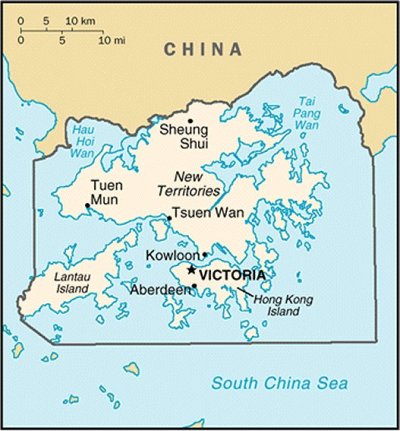 MAP HK.jpg77.3 KB · Views: 107
MAP HK.jpg77.3 KB · Views: 107 -
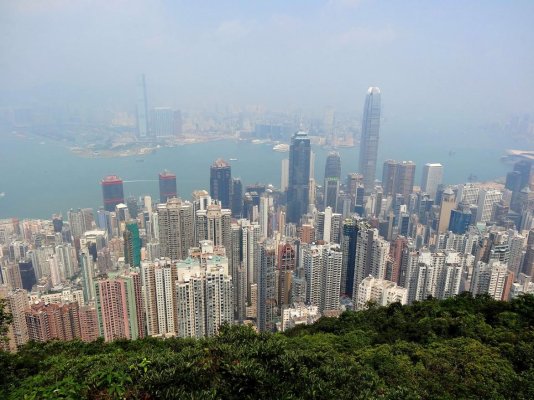 Dsc07533.jpg196.5 KB · Views: 119
Dsc07533.jpg196.5 KB · Views: 119 -
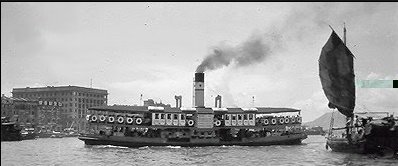 STEAM FERRY.jpg16.8 KB · Views: 851
STEAM FERRY.jpg16.8 KB · Views: 851 -
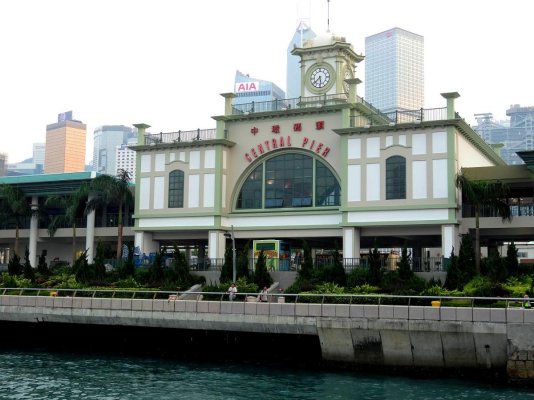 Central pier.jpg152.7 KB · Views: 127
Central pier.jpg152.7 KB · Views: 127 -
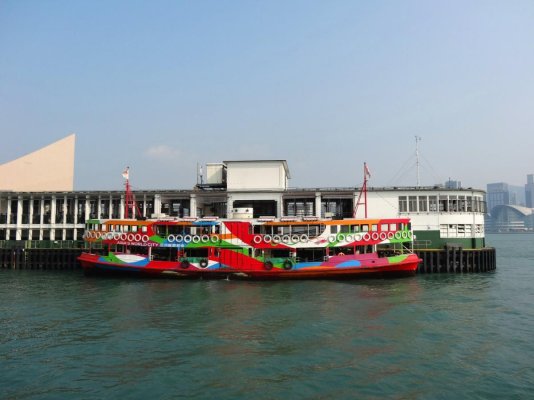 Tsim Sha Tsui.jpg107.5 KB · Views: 121
Tsim Sha Tsui.jpg107.5 KB · Views: 121 -
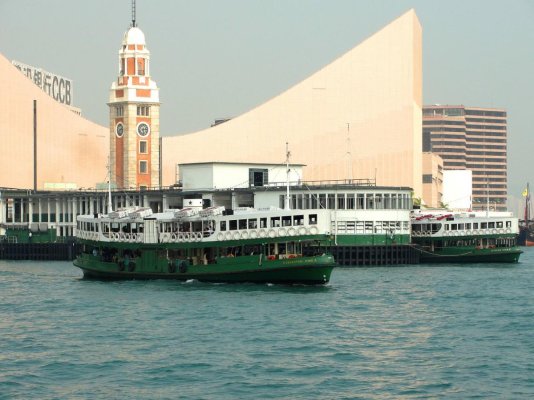 Dsc01041.jpg148.6 KB · Views: 129
Dsc01041.jpg148.6 KB · Views: 129 -
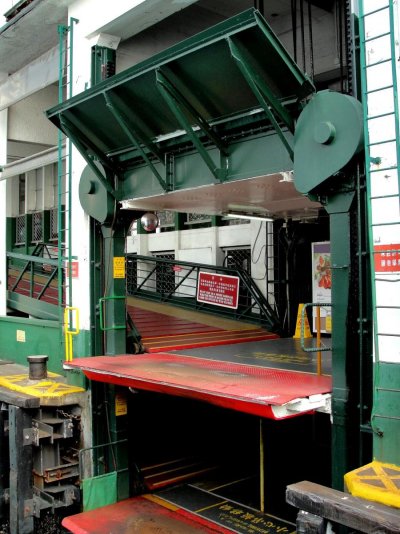 Dsc01043.jpg175.2 KB · Views: 114
Dsc01043.jpg175.2 KB · Views: 114 -
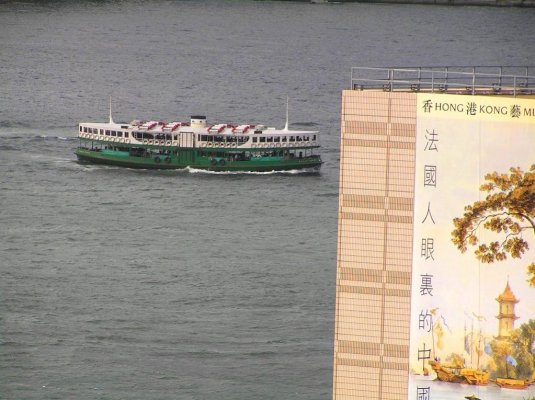 P1011408.jpg131 KB · Views: 143
P1011408.jpg131 KB · Views: 143 -
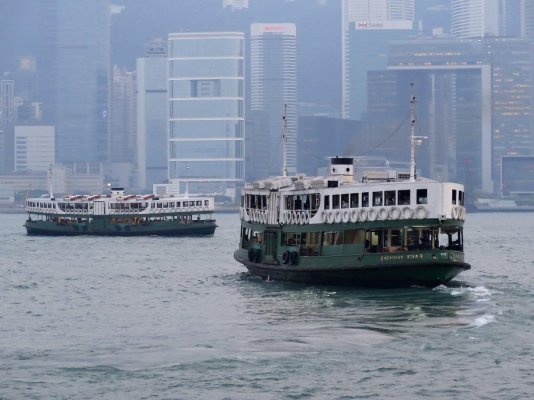 Dsc07582.jpg127.4 KB · Views: 123
Dsc07582.jpg127.4 KB · Views: 123 -
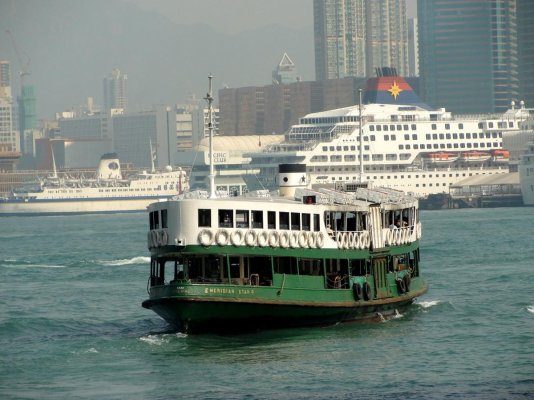 Dsc00933.jpg158.4 KB · Views: 119
Dsc00933.jpg158.4 KB · Views: 119

